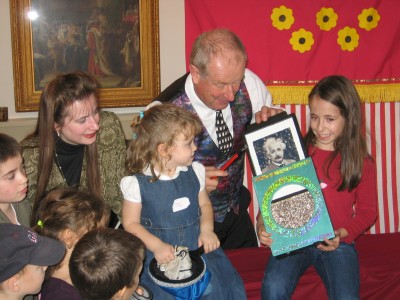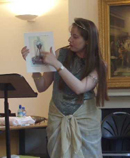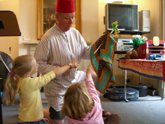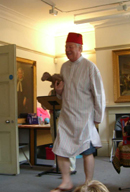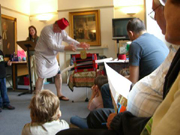In 2005, I teamed up with magician Tony Drewitt to produce the family show Physics and Magic – A Journey Beyond E=mc2. In this show, Tony and I explored the historical links between science and magic, took the audience back to the days of the great 19th and early 20th Century magicians such as Chung Ling Soo and David Devant, and used illusions and Punch and Judy to explain some of Einstein’s grandest theories.
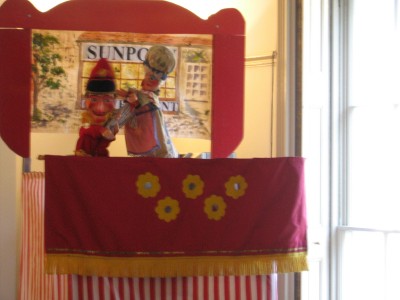
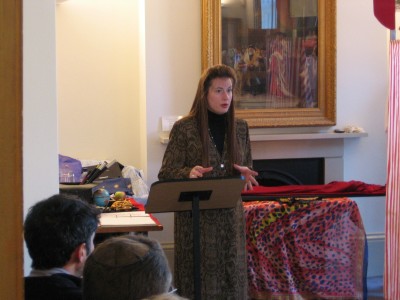
We decided to combine our respective professions in 2005 because it was not only the centenary of the Magic Circle, but was also Einstein Year. This was the UK’s contribution to the International Year of Physics marking the centenary of Einstein’s groundbreaking papers on special relativity, Brownian motion and the photoelectric effect.
Tony and I gave our first two performances of Physics and Magic at The Jewish Museum London in October, and were asked back to give another performance in November. As you can see from the pictures below, there was no shortage of volunteers to help with the illusions and science demonstrations.
Press coverage of the event included my appearance on 12th October 2005 on the BBC Radio 4 chat show Midweek. This was presented by Libby Purves, and the other guests were playwright Arnold Wesker, rock musician Chris Rea, and knitter and historian Anne Sinclair. If you’d like to read more about the show on the BBC archive please click here.
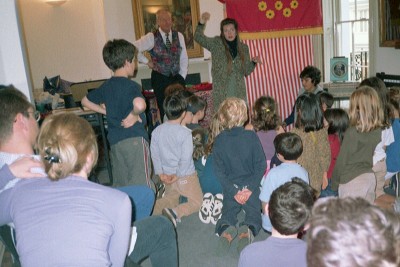
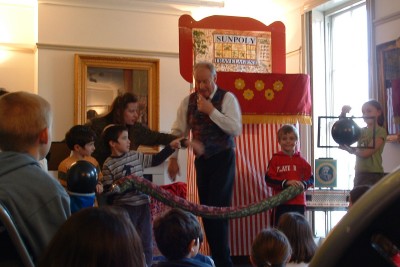
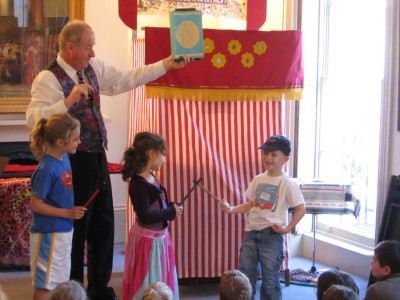
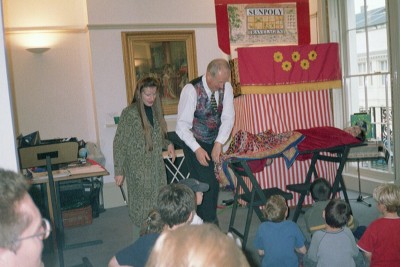
Science and Magic – Journey to the Land of the Pharaohs
After the success of Physics and Magic – A Journey Beyond E=mc2, The Jewish Museum London asked magician Tony Drewitt and I to devise a new show based on the science and magic of Ancient Egypt. Science and Magic – Journey to the Land of the Pharaohs was created to coincide with their exhibition on Passover, an important Jewish festival that commemorates the biblical story of Moses.
As you will see from the pictures, we both decided to dress up. Tony’s costume was a tribute to one of his favourite performers Tommy Cooper, who wore an Egyptian fez as part of his act, while I tried to give an idea of how the Egyptian princess, who according to Exodus found baby Moses in a basket, might have looked.
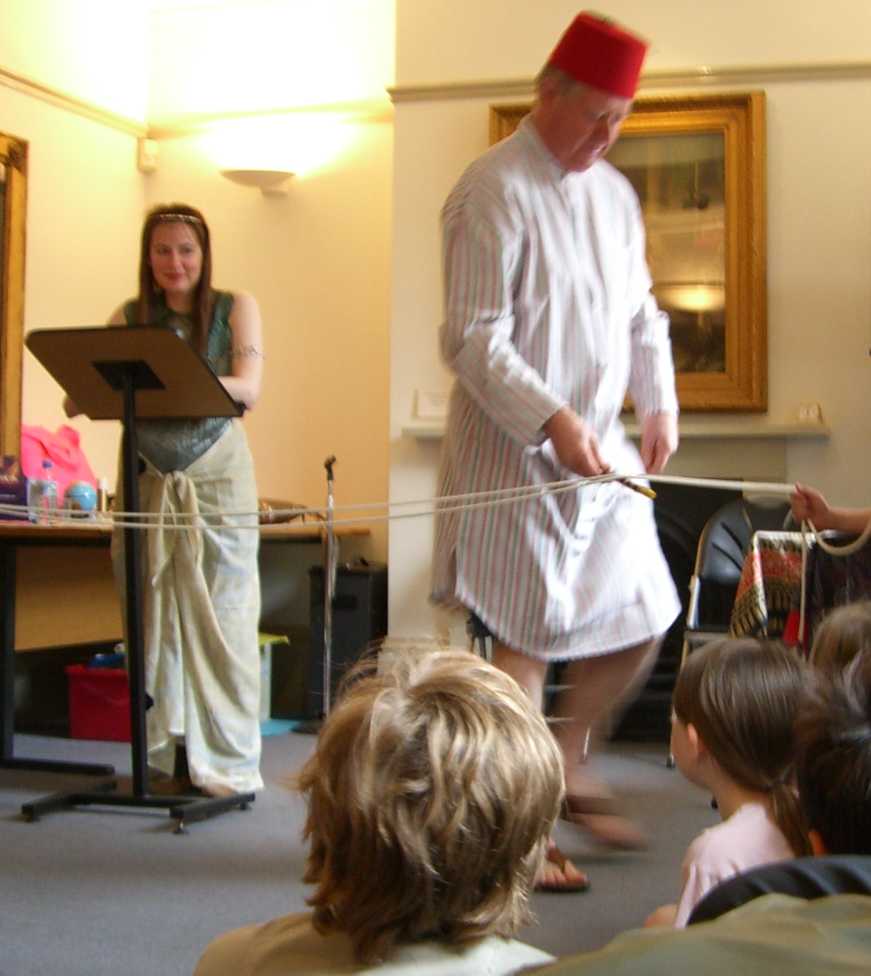
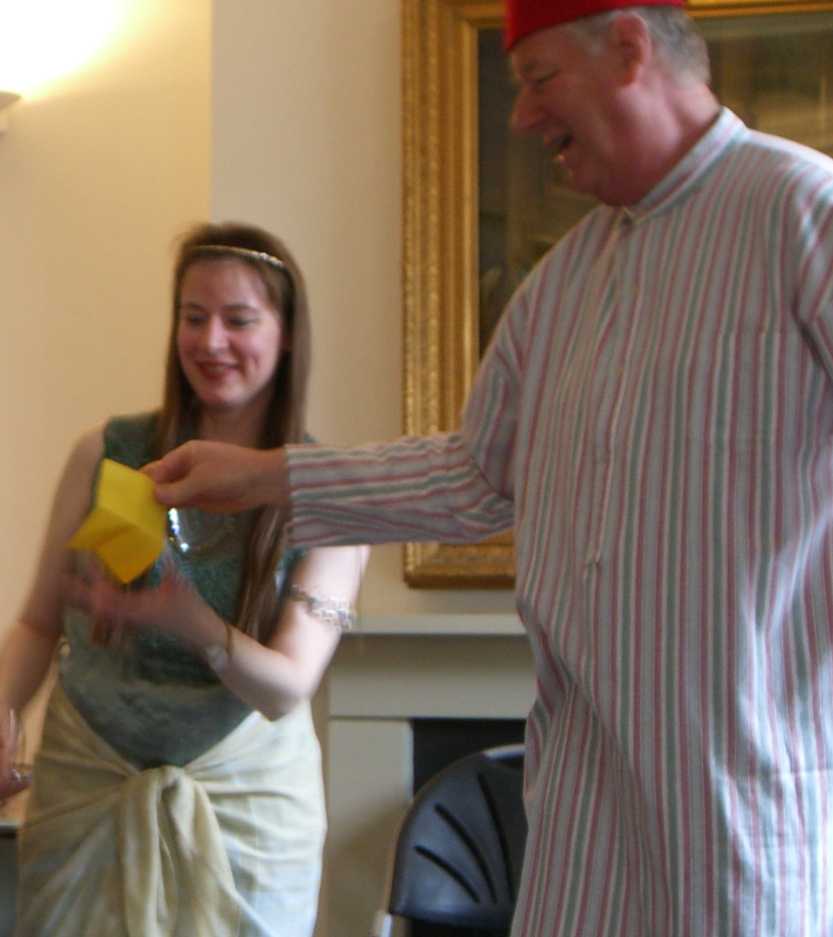
Both Tony and I have been interested in Egyptology for years, and at the bottom of this page I’ve listed some of the books and websites that we found most interesting during the course of our research for the show. These references include information on a wide range of topics from Ancient Egyptian costume and make-up, through building and technology, to magic, rituals and mummification. The pictures on this page are from the two shows that Tony and I performed at the Jewish Museum in May 2006, which were both sold out.
Suggested Reading on Ancient Egypt
The Little Book of Egyptian Hieroglyphs by Lesley and Roy Adkins, Hodder & Stoughton, 2001. ISBN 0340794852
The British Museum Concise Introduction: Ancient Egypt by T.G.H James, The British Museum Press, 2005. ISBN 0714119660
The Complete Idiot’s Guide to Ancient Egypt by Donald P.Ryan, Alpha Books, 2002. ISBN 0028642775
Egyptian Mummies by Carol Andrews, British Museum Press, 1998. ISBN 0714121398
Websites:
For games and other activities based on Ancient Egypt visit this portal. The British Museum has a whole website on Ancient Egypt that contains loads of interesting facts as well as interactive activities for children. The section on writing at the time of the Pharaohs looks particularly good.
There are also several pages on Ancient Egypt in the History section of the BBC website. Here are my favourites:
Ancient Egyptian Magic by Dr Geraldine Pinch.
The Private Lives of the Pyramid-builders by Dr Joyce Tyldesley.
Parental Guidance: I’m afraid I have not had time to read the entire contents of these websites and books, so would suggest you checked for suitability prior to allowing lone minors access to them. I can certainly see that some of the material on mummies may upset very young children.
